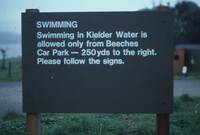Not all reservoirs need be peaceful.
There is a demand for two different types of recreation reservoir: for quiet and noisy activities. London's urban reservoirs are well suited to this purpose and their development could lessen the flow of weekend visitors into countryside. Quiet activities should be centred in quiet areas. Sites adjoining bunded reservoirs could be developed with swimming beaches, surfboarding facilities and yacht marinas. In noisy areas, near airports and motorways, a few reservoirs should be developed for intensive use by power boats. High noise levels are incompatible with passive recreation. Speed boat racing and waterï¾skiing are popular as participant and spectator sports, but are unpopular with other visitors to natural lakes, river estuaries and the seaside.
When reservoirs are intensively used for recreation, water authorities should abstract water only in periods of exceptional drought. In the Winconsin river basin, where water is drawn from 16 natural lakes and 5 reservoirs, the authorities aim to confine maximum drawdown to water bodies with the least intensive shoreline usage (Stefan 1981: 11).
Since the medical profession now points to lack of exercise as a primary cause of illï¾health, there is an opportunity for reservoirs to make their second great contribution to the improvement of public health: by increasing facilities for outdoor recreation (Taylor 1982).

